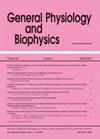Effects of percutaneous coronary intervention via transradial artery access combined with metoprolol on cardiac function and vascular endothelial function in elderly patients with coronary heart disease
IF 1.3
4区 生物学
Q4 BIOCHEMISTRY & MOLECULAR BIOLOGY
引用次数: 0
Abstract
This research was designed to unveil the impacts of percutaneous coronary intervention via transradial artery access (TRA-PCI) combined with metoprolol on cardiac function and vascular endothelial function in elderly patients with coronary heart disease (CHD). Collectively, 112 CHD patients were enrolled and allocated into a control group (patients treated with TRA-PCI) and an observation group (patients treated with TRA-PCI and metoprolol) following the random number table method (n = 56 patients). The treatment outcome, cardiac function indicators, serum inflammatory factor indicators, vascular endothelial function indicators, and the occurrence of coronary restenosis were compared between the two groups. After treatment, elevated total effective rate was noted in CHD patients treated with TRA-PCI and metoprolol in contrast to TRA-PCI treatment alone. CHD patients treated with TRA-PCI and metoprolol alleviated cardiac function and vascular endothelial function and reduced inflammatory response and the occurrence of coronary restenosis in comparison to TRA-PCI treatment alone. TRA-PCI combined with metoprolol is effective in improving cardiac function and endothelial function, and reducing the degree of inflammation in the body and the occurrence of coronary restenosis in CHD patients.经桡动脉经皮冠状动脉介入治疗联合美托洛尔对老年冠心病患者心功能和血管内皮功能的影响
本文章由计算机程序翻译,如有差异,请以英文原文为准。
求助全文
约1分钟内获得全文
求助全文
来源期刊

General physiology and biophysics
生物-生化与分子生物学
CiteScore
2.70
自引率
0.00%
发文量
42
审稿时长
6-12 weeks
期刊介绍:
General Physiology and Biophysics is devoted to the publication of original research papers concerned with general physiology, biophysics and biochemistry at the cellular and molecular level and is published quarterly by the Institute of Molecular Physiology and Genetics, Slovak Academy of Sciences.
 求助内容:
求助内容: 应助结果提醒方式:
应助结果提醒方式:


